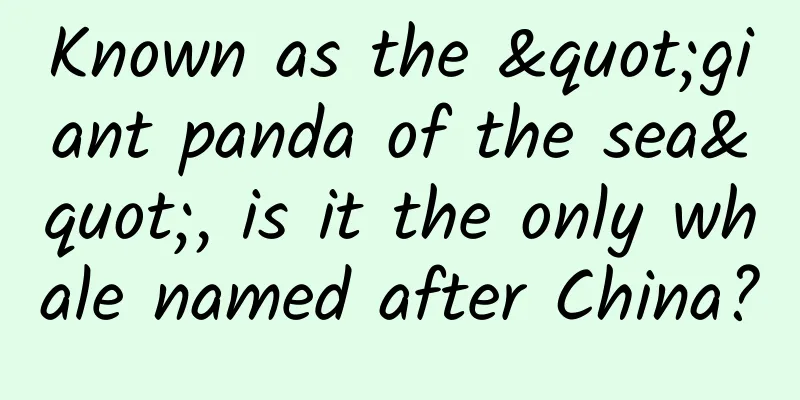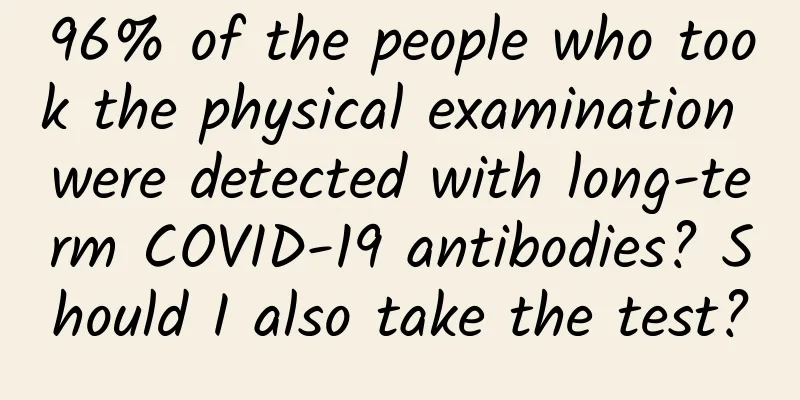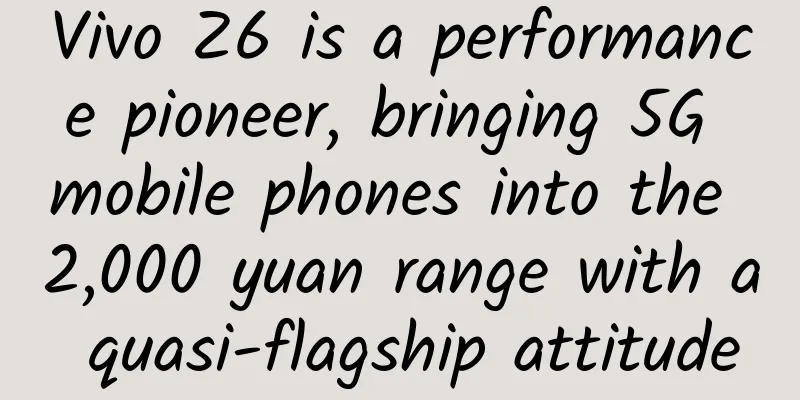Please remember her name again - Happy 91st birthday Tu Youyou!

|
She discovered artemisinin, which can effectively reduce the mortality rate of malaria, and also tested the drug on herself to test the safety of artemisinin. Today is the 91st birthday of Tu Youyou, the winner of the "Medal of the Republic". Happy birthday to Tu Youyou! Tu Youyou took a photo after winning the Nobel Prize in October 2015. Xinhua News Agency Biography Tu Youyou: Born in December 1930 in Ningbo, Zhejiang Province, she is a lifelong researcher at the China Academy of Chinese Medical Sciences and director of the Artemisinin Research Center. For more than 50 years, she has led her team to overcome difficulties and made Artemisia annua world-famous. In 2015, she won the Nobel Prize in Physiology or Medicine; in 2017, she won the 2016 National Highest Science and Technology Award; in 2019, she was awarded the "Medal of the Republic". "I studied medicine, not only can I stay away from illness, but I can also save more people" "Deer call, eating wild artemisia." Tu Youyou's name destined her to be connected with Artemisia annua for life. Tu Youyou was born in Ningbo, Zhejiang Province in December 1930. "The Book of Songs for girls, Chuci for boys" is an old Chinese naming custom. Tu Youyou's father picked the word "Youyou" from the Book of Songs, Xiaoya. He also added a line "The green wormwood repays the spring sunshine". He never expected that this "little grass" would change her fate. Tu Youyou's education was interrupted by an illness. At the age of 16, she unfortunately contracted tuberculosis and recovered after more than two years of treatment. This experience made her interested in medicine. "If I study medicine, I can not only stay away from illness, but also save more people. Why not?" From then on, Tu Youyou decided to pursue a career in medicine... In 1951, Tu Youyou was admitted to the Department of Pharmacy of Peking University Medical School (now the School of Pharmacy, Peking University Health Science Center), and chose the unpopular major of pharmacognosy. Many years later, Tu Youyou said that this was her wisest choice. After graduating from university in 1955, Tu Youyou was assigned to the Institute of Chinese Materia Medica of the former Ministry of Health's Institute of Traditional Chinese Medicine (now the China Academy of Chinese Medical Sciences), where she has worked ever since. Four years after joining the work, Tu Youyou became a student of the "Third Class of Western Medicine Students Leaving the Institute of Traditional Chinese Medicine to Study Traditional Chinese Medicine" organized by the former Ministry of Health, where she systematically studied traditional Chinese medicine knowledge and the inspiration for discovering artemisinin was born. Besides training, she often went to the herbal medicine company to learn Chinese medicine identification and processing techniques from experienced pharmacists. She studied and followed the authenticity of herbal medicines, quality identification, processing methods, etc. These daily accumulations laid a solid foundation for her future work in anti-malarial projects. "I am the team leader, and it is my responsibility to be the first to try the drug." In July 1972, a group of special "patients" were admitted to Beijing Dongzhimen Hospital, including Tu Youyou, who was to be "guinea pigs" for drug testing. Tu Youyou said without hesitation, "I am the team leader, and I have the responsibility to be the first to test the drug!" This story also started with the "523" project. In January 1969, 39-year-old Tu Youyou suddenly received an urgent task: as the leader of the research team, she worked with more than 500 researchers from 60 scientific research institutions across the country to develop new antimalarial drugs. The project was named after the meeting date of May 23, 1967, and was thus called the "523" project. In the initial stage, the institute arranged Tu Youyou to work alone. In just three months, she collected and sorted out more than 2,000 prescriptions and compiled a collection of 640 prescriptions for malaria, which she submitted to the "523" office. After two years, her team gradually grew. After hundreds of failures, Tu Youyou set her sights on the traditional Chinese medicine Artemisia annua: they found that the inhibition rate of Artemisia annua on malaria in mice had reached 68%, but the effect was unstable... Speaking of the hardships of the research, Tu Youyou's husband Li Tingzhao still remembers it vividly: In order to find the reason for the unstable effect, Tu Youyou once again revisited ancient medical books. A few words in the "Emergency Prescriptions for the Elbow" by Ge Hong of the Eastern Jin Dynasty caught her attention: "Take a handful of Artemisia annua, soak it in two liters of water, squeeze out the juice, and drink it all." "First, there is the problem of the variety of Artemisia annua. There are many varieties of traditional Chinese medicine. Which species of Artemisia annua is it? Second, which part of the medicinal part of Artemisia annua is the juice squeezed as mentioned in "Emergency Prescriptions for the Elbow"? Third, what impact does the harvest season of Artemisia annua have on its efficacy? Fourth, what is the most effective extraction method?" said Tu Youyou. Tu Youyou repeatedly considered these issues and finally chose the low-boiling-point ether extraction. After many failures, on October 4, 1971, the ether neutral extraction sample No. 191 achieved a 100% inhibition rate on both mouse malaria and monkey malaria. Although the ether neutral extract was available, suspected side effects were found in the pathological sections of individual animals. It can only be used clinically after it is confirmed to be safe. Malaria is seasonal, and if you miss the clinical observation period of the year, you have to wait another year. Therefore, Tu Youyou submitted a volunteer drug trial report to her leader and also encouraged her colleagues to participate. “Although artemisinin was discovered nearly half a century ago, its underlying mechanism still needs further study” However, the first clinical observation of artemisinin started off badly. In September 1973, during the first clinical observation of artemisinin tablets in Hainan, only one of the first five cases of malignant malaria was effective; two had some effect, but the malarial parasites were not completely killed; and the other two were ineffective. A series of questions troubled Tu Youyou: It was not a problem of artemisinin purity, nor was it a problem of animal experiments and data. Could it be the dosage form? Hainan clinical trial personnel sent the tablets back to Beijing. Everyone felt that the tablets were too hard and difficult to crush with a mortar. Obviously, the disintegration problem would affect the absorption of the drug. Therefore, Tu Youyou decided to put the original powder of artemisinin drug monomers directly into capsules and conduct another clinical trial. This time, the patient's body temperature returned to normal within an average of 31 hours after taking the drug, indicating that the efficacy of artemisinin capsules was consistent with the laboratory efficacy. From the transformation of chemical substances to drugs, the research on artemisinin will never end. In 1982, Tu Youyou received the invention certificate and medal at the National Science and Technology Awards Conference as the first inventor of the first invention unit of the new antimalarial drug artemisinin. The successful development of artemisinin has brought good news to patients suffering from malaria all over the world. According to statistics from the World Health Organization, more than 200 million malaria patients benefit from artemisinin combination therapy every year, and the number of deaths from malaria has steadily decreased from 736,000 in 2000 to 409,000 in 2019. The discovery of artemisinin has saved the lives of millions of people around the world. Tu Youyou won the 2015 Nobel Prize in Physiology or Medicine. For the first time, a clear and gentle Chinese voice was heard on the Nobel Prize podium at the Karolinska Institute in Sweden; the title of Tu Youyou's academic report was "Artemisinin - a gift from traditional Chinese medicine to the world." Facing the honor, Tu Youyou remained calm as always. Before the announcement of the candidates for the Medal of the Republic, the selection committee contacted Tu Youyou. At that time, she repeatedly confirmed a series of questions: Am I qualified for such an important honor? Has the organization sought everyone's opinions? ... It was not until the other party repeatedly confirmed and guaranteed that she agreed to accept it. Living in an ordinary residential building in Chaoyang District, Beijing, Tu Youyou has not yet become a "star" scientist, and her energy is still on scientific research. With Tu Youyou's continuous efforts, in August 2019, the China Academy of Chinese Medical Sciences held a groundbreaking ceremony for the Artemisinin Research Center in Daxing, Beijing; the white main building of the research center in the vision is like a vibrant Artemisia annua. "Although artemisinin was discovered almost half a century ago, its underlying mechanism still needs further study." Tu Youyou hopes that future generations will make breakthroughs. April 25, 2019 is the 12th World Malaria Day. Scientists from the Artemisinin Research Center and the Institute of Chinese Materia Medica of the China Academy of Chinese Medical Sciences proposed a reasonable response plan for "artemisinin resistance" in the New England Journal of Medicine. The first author was specially appointed expert Researcher Wang Jigang, and Tu Youyou guided the team to complete it. In the future, the antimalarial mechanism of artemisinin will be the focus of her and her research team. A herb that helps the world, a heart that serves the country. In response to the COVID-19 outbreak, Tu Youyou called on global scientific research and medical workers to devote themselves to the prevention and treatment of major infectious diseases with an open attitude and a spirit of cooperation... ■Reporter's Notes The power of inner peace Tu Youyou's life can be divided into two stages: one is preparation for the study of artemisinin; the other is the study of artemisinin. The dividing point was in January 1969 when she was appointed as the leader of the "523" project "Anti-malarial Chinese Herbal Medicine Research" research team. After that, she never stopped until she won the Nobel Prize. Tu Youyou's "secret recipe for success" comes from the "character formula" of scientific masters: the power of inner peace, the realm of indifference to fame and fortune, the persistence in pursuing the truth, and the tireless persistence. At the age of 80, Tu Youyou is still determined to study the deep mechanism of artemisinin. Without inheritance, innovation will lose its foundation; without innovation, inheritance will lose its value. Only by innovating in inheritance and inheriting in innovation can the ancient Chinese medicine remain fresh and new. In the face of the COVID-19 epidemic, the combination of Chinese and Western medicine and the use of both Chinese and Western medicines are the characteristics of my country's epidemic prevention and control, and are also a vivid practice of inheriting the essence of traditional Chinese medicine and maintaining integrity and innovation. From anti-malaria to anti-epidemic, traditional Chinese medicine has demonstrated its unique advantages in responding to infectious diseases. People of insight hope that after Tu Youyou, traditional Chinese medicine practitioners will pass on the torch, and more peaks will rise to discover more "artemisinin" and save more lives. Comprehensive sources: People's Daily, Xinhua News Agency, Xinhuanet, Huanqiu.com, etc. |
<<: Big data tells you what the elderly are busy with when they go online?
>>: Long March 3B rocket launches successfully! China's space program ends perfectly in 2021
Recommend
Long picture | 30 years of chasing dreams of the stars and the sea, paying tribute to China's manned space flight
END Tadpole five-line score original work, please...
We are all human beings, so why are there so many differences? — The answer from DNA
"Why is Yao Ming so tall, but I am so short?...
A detailed analysis of Perfect Diary’s social media sales pitch
Perfect Diary was founded in 2016, but it only op...
Fighting monsters, carving, starting nuclear fusion, why are you everywhere?
When I was a kid, I sat in front of the TV and wa...
How can a newbie on Tik Tok gain followers quickly? Secrets of how to increase followers on Douyin
This article mainly introduces how Douyin novices...
Don't take the hot weather lightly, heat stroke is not a trivial matter
Author: Wang Changyuan, Chief Physician, Xuanwu H...
Doushang Commune "Doudian Operation Complete Series Course"
Resource introduction of Dou Shang Commune's ...
Air conditioning industry suffered a setback? Lack of quality awareness among manufacturers is the internal cause
A new market crisis is gradually approaching the ...
Meng Ge Resume: How can a novice with no basic knowledge learn SEO optimization?
We all know that SEO is the basis of online marke...
How to choose the first release channel? 8 hidden rules of APP operation
First, let Zhuge help you understand the position...
Game Special Effects Art Design Course Beginner Class
Course Catalog ├──Lesson 8 - Drawing Elements - P...
Using the growth model to review Himalaya FM’s product growth
I am a product dog. Curiosity drives me to consta...
Meteor hammers, maces...how many other tricks can a dinosaur's tail have?
Dinosaurs are definitely the stars of ancient cre...
The importance of sleep: It turns out that sleeping well has so many benefits!
Sleep is an important and indispensable part of h...
A large amount of Qianchuan running material "production formula" [with script plan]
As the saying goes: An optimizer who doesn’t unde...









